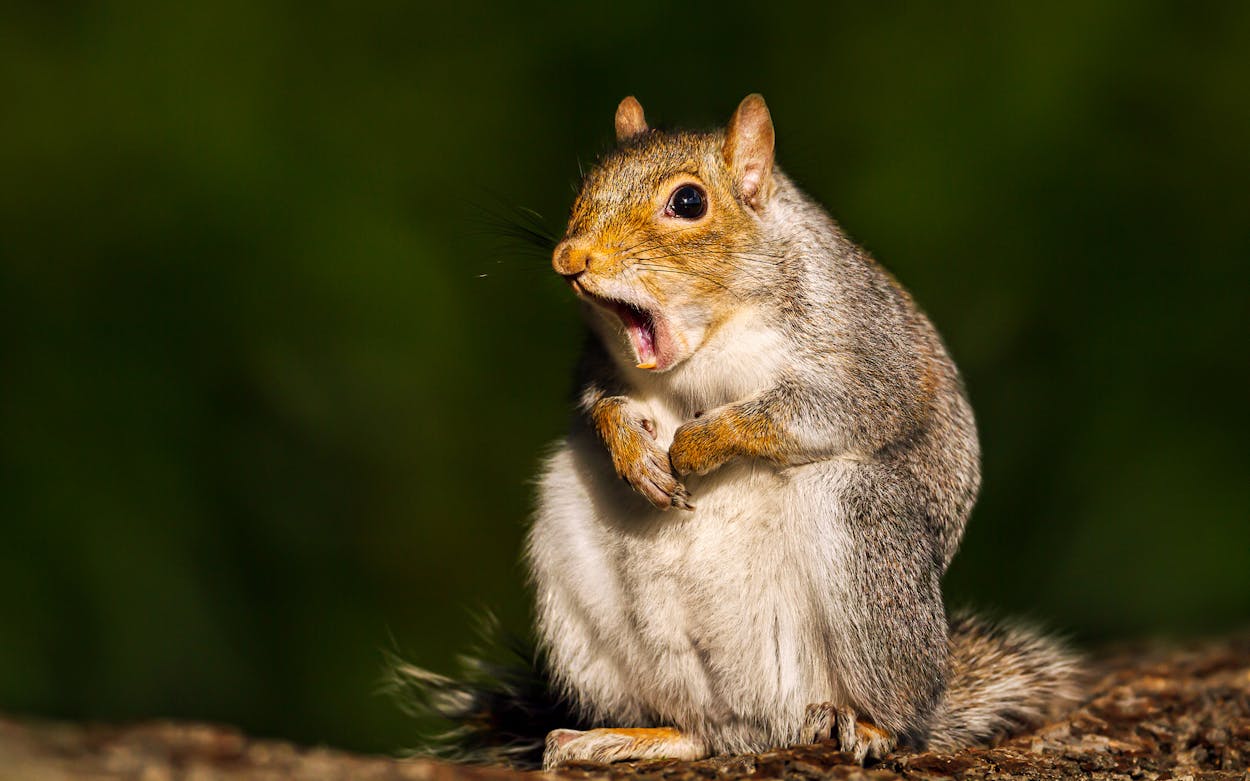Pardon the pun, but the squirrels are going nuts this year.
Not long ago, Texans were giddily sharing blueprints for squirrel-size picnic tables. Now, perhaps emboldened by the invitation to hang out in our backyards, the fluffy-tailed rodents are out in force, wreaking havoc on gardens, stripping bark from trees, and demonstrating Simone Biles–like acrobatic skills as they break into bird feeders.
And frankly, some of us are sort of sick of it. But first, we checked with Shaun Oldenburger, small-game program director for Texas Parks and Wildlife, to find out exactly what is going on.
Texas is home to two types of squirrels, Oldenburger says. Fox squirrels, which weigh just shy of two pounds each, live in upland regions; gray squirrels, their smaller, more skittish counterparts, inhabit bottomlands in East Texas near rivers and creeks. (They also taste better, according to hunters who fry, stew, or cook their meat for tacos.)
Populations of both fluctuate, depending primarily on rainfall and mast, the annual nut crop that squirrels eat, according to Oldenburger. Mild, wet springs and summers bring more nuts, which means plenty of food for squirrels, who then produce healthier and stronger pups the following season.
That may be happening in some parts of the Lone Star State now.
Squirrels are out gathering food and material to spruce up their nests for the winter. A single fox squirrel can cache between 3,000 and 10,000 nuts per year—and recall where most of them are buried. There’s also a decreasing interest in squirrel hunting across the Lone Star State. Roughly 43,000 squirrel hunters harvested about 350,000 squirrels last year, compared with about 100,000 squirrel hunters who harvested 1 million squirrels twenty years ago, Oldenburger says.
“We’re not fans,” says Sam Davidson, a public relations professional in Austin who has shared photos on Instagram of the oddly artistic damage done to a pumpkin by the overzealous gnawing of a squirrel. She also blames the rodents for eating all the pecans from her backyard tree. “They’ve chewed through patio furniture; ripped apart pillows on our deck,” she says. “I think they’re out there mocking us.”
In Colleyville, investment banker Brad Purifoy has been waging battle with a determined band of squirrels who have chewed along the roofline of his home, nibbled shingles, and pulverized the arms of his Adirondack chairs. “It’s a constant battle,” he says. “I’ll cover something up with wire mesh because that does stop them, but then they’ll find something else to chew on,” he says.
Purifoy, who has armed his bird feeders with three supposedly squirrel-resistant slippery metal domes, marveled at a twenty-minute video by Mark Rober showing squirrels defeating an eight-stage Ninja Warrior–like obstacle course.
“We don’t try to kill them, but at times we want to,” he says. “When I see one on a chair, I’ll grab a [child’s toy] air gun and run out there and try to shoot in his direction. He just looks up at me like, ‘What are you doing?’ ”
The squirrels rage on. But not everybody hates this season’s bumper crop of crafty critters.
David Carter, 53, a photojournalist who lives on a ranch west of Waco, began photographing them after installing a bird feeder last year. The squirrels raided his feeders, so he moved them onto the window ledge, where he figured they wouldn’t venture.
“Then they’d just stare at me through the window,” Carter says.
So he did what any retired WFAA-TV news cameraman who prided himself on working random footage of squirrels into cutaway shots would do: he put on a Stormtrooper mask and other props and started snapping pictures. Now the resulting shots, some of which are mash-ups of two separate photos, provide comic relief.
“They’re just so carefree. They don’t have a deadline five times a day,” Carter says.
- More About:
- Critters






